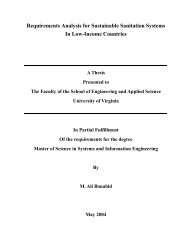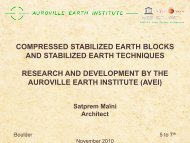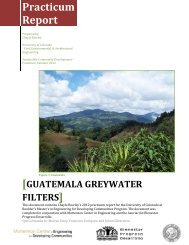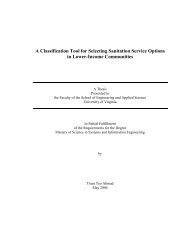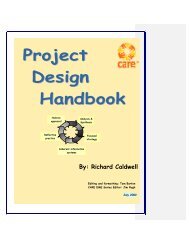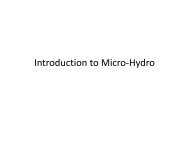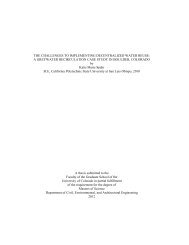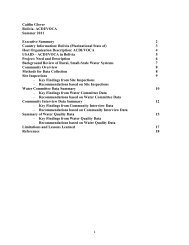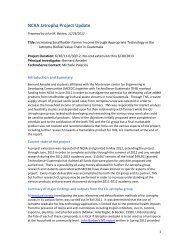SCEBs - University of Colorado Boulder
SCEBs - University of Colorado Boulder
SCEBs - University of Colorado Boulder
Create successful ePaper yourself
Turn your PDF publications into a flip-book with our unique Google optimized e-Paper software.
3.2. Testing Methodology Flow Chart<br />
Testing Methodology for Determining Soil Suitability in SCEB Production<br />
Obtain raw samples <strong>of</strong> soil to be tested for suitability in SCEB production.<br />
Initial Soil Observations<br />
Angular sand aggregate<br />
Soil free from organic material<br />
Grain Size Analysis/Soil Classification<br />
Criteria:<br />
Satisfactory coarse to fine grain particle ratio<br />
Satisfactory plasticity index (>10)<br />
Select range <strong>of</strong> soil mix ratios<br />
Provide several sample mixes by varying the relative<br />
proportions <strong>of</strong> clayey soil, sand, cement, and water to<br />
compare performance in block production and testing<br />
Repeat to<br />
achieve<br />
optimal mix<br />
design<br />
Acceptable<br />
Unacceptable<br />
Acceptable Acceptable<br />
Acceptable<br />
Mini/Large-Block Production and Testing<br />
Criteria:<br />
Satisfactory compaction/moisture content<br />
Satisfactory dry density<br />
Satisfy UCS & MOR standards<br />
Satisfactory durability performance<br />
Acceptable<br />
Figure 3.1: SCEB Testing Methodology<br />
Infeasible<br />
Soil Amendments<br />
Blending/Remixing<br />
Stabilization<br />
Unacceptable<br />
material properties<br />
Proceed with SCEB Production<br />
15



